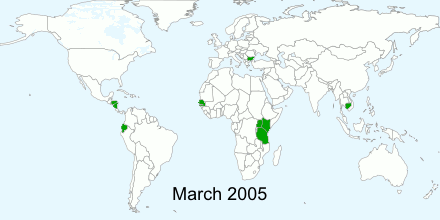| Country | # Loans | % |
| United States | 1,603,062 | 70.1% |
| Canada | 200,554 | 8.8% |
| United Kingdom | 78,735 | 3.4% |
| Australia | 66,319 | 2.9% |
| Germany | 44,815 | 2.0% |
| Netherlands | 39,575 | 1.7% |
| France | 29,479 | 1.3% |
| Norway | 28,039 | 1.1% |
| Sweden | 21,905 | 1.0% |
| Belgium | 21,756 | 1.0% |
The list is kind of what you would expect for an organization based in America, and mostly in English. But there are a few surprises. Since the lender's country is self-reported, there is certainly some bad data. For example, Antarctica is #91, with 62 loans from two people. The oddest result is Christmas Island, #24 with 3,408 loans, between Poland and United Arab Emirates. However, all of these loans are from one person, and based on his lender page I think
it's safe to say he's not from Christmas Island. It's interesting how much a single person can affect some of the metrics. With a minimum of $25 per loan, this is over $85,000 from a single lender! (More of top lenders later...)
